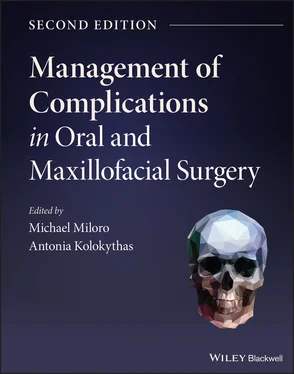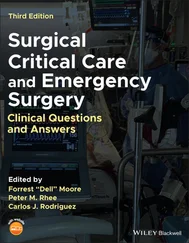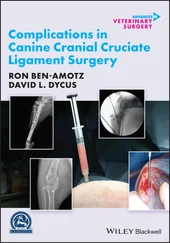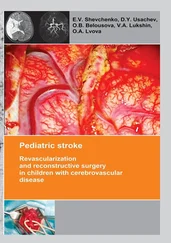1 ...8 9 10 12 13 14 ...40 If additional testing is indicated, the patient's physician should be contacted prior to the planned anesthetic, since patients may have had an ECG or other cardiac test performed recently. Chest radiographs or ECGs that are abnormal are always an indication for further investigation, though further testing may not be needed. If previous ECGs or chest radiographs show an abnormality that has remained stable with time and if the patient's physician has indicated this, further testing is unlikely to change the clinical assessment. However, any abnormal finding that is new or has progressed from previous test results should result in follow‐up with the patient's treating physician and additional testing as indicated.
Preoperative testing can help to identify abnormalities and quantify the level and type of disease a patient may have, but the clinician must ultimately gather these data and interpret them in a clinically useful manner. Several algorithms and classification schemes have been developed to aid in converting clinical data into a measure of anesthetic risk that can aid the surgeon in determining the relative risk of a particular patient for undergoing an outpatient anesthetic procedure. One of the most popular, the ASA classification, has already been mentioned. Several risk stratification schemes exist for cardiovascular risk factors in particular, including the most recent guidelines from the ACC/AHA (described above).
Preoperative patient screening not only helps to identify those patients who represent a poor risk for outpatient anesthesia, but for low‐ and moderate‐risk patients can also help to identify any patient‐specific risks and aid in planning ahead.
Intraoperative Patient Monitoring
Technological advances have produced an increasing number of new and improved devices for the intraoperative monitoring of patient vital signs and sedation level. Patient monitors not only provide peace of mind that the patient is stable, but can also provide an early warning when complications begin to occur. Ideally, effective intraoperative monitoring can allow potentially serious situations to be recognized early and effectively managed. Basic measurements during outpatient anesthesia include pulse oximetry, end‐tidal CO 2(ETCO 2) (waveform capnography), heart rate monitoring, and intermittent noninvasive blood pressure monitoring.
Pulse oximeters are designed to estimate the peripheral arterial blood oxygen saturation as measured/estimated by the pulse oximeter (SpO 2) and work via measurements of infrared energy transmission. In smokers, pulse oximetry readings may be artificially increased due to the level of carboxyhemoglobin present in the circulation. This is especially true for those who have smoked tobacco within a few hours of the anesthetic procedure. The pulse oximeter cannot distinguish between carboxyhemoglobin and oxygen‐carrying hemoglobin in the blood of smokers and thus provides an overestimate of the true blood oxygen saturation. Nail polish or cold extremities may interfere with the function of the pulse oximeter.
The reading provided by pulse oximetry (SpO 2) is a good approximation of arterial oxygen saturation (SaO 2), and a 90% SpO 2level is the standard cutoff value below which desaturation begins to have noticeable clinical effects. At an SpO 2of 90%, the SaO 2is approximately 60% (oxyhemoglobin dissociation curve), and that is why the low SpO 2alarm on the pulse oximeter should be set at or above the 92% range. There is a time delay between a patient's true oxygen saturation and the pulse oximeter reading, and many oximetry machines will sound an alarm when a patient's oxygen saturation reading drops below 93% or 94% to account for this. Most healthy adults will have an SpO 2between 98% and 100% on room air, but occasionally patients with underlying respiratory compromise will have a baseline O 2saturation of 94–95%. It can be important to know this prior to beginning a procedure to avoid the erroneous assumption that a patient with a low baseline O 2saturation is experiencing respiratory depression as a result of anesthesia.
Heart Rate and Rhythm Monitoring
A basic heart rate monitor will be sufficient in many circumstances; however, a three‐lead or five‐lead ECG monitor will provide a tracing of the cardiac rhythm, which can be indispensable if a complication arises that involves a cardiac arrhythmia, ST segment elevation or depression, or ischemia/infarction.
Blood pressure readings should be taken, at a minimum, both before and after an anesthetic procedure as well as prior to patient discharge. An automatic blood pressure cuff that can be set to take readings at different time intervals (noninvasive blood pressure) is an efficient choice. Routine interval blood pressure measurements (at five‐minute intervals) are useful in all patients because even low‐risk patients may experience anesthetic complications involving blood pressure changes. In higher‐risk patients, blood pressure monitoring is especially important, particularly when there is concern about hypertension, hypotension, or changes in cardiac output.
Capnography devices utilize a chemical probe that measures the level of expired carbon dioxide (ETCO 2) and can be used to monitor respirations. It is typically utilized in conjunction with a nose mask or nasal hood or nasal cannula. This “open” system can lead to limitations in its usefulness if a patient is breathing through their mouth instead of through the nose. It can be extremely useful, however, as it provides a measure of tidal volume, respiratory rate, and respiratory depth. While it does not provide an estimate of blood oxygen saturation, it is more sensitive than pulse oximetry for detecting respiratory depression and apnea.
Precordial (Esophageal) Stethoscope
The precordial or esophageal stethoscope is a bell‐type stethoscope that is placed on the pretracheal region near the sternal notch. By listening through one or two earpieces, or using a Bluetooth system, a practitioner can auscultate a patient's respirations and will be immediately alerted to any change in respiratory rate, depth, or quality. While this method of intraoperative monitoring is sensitive, it does not appear to be particularly popular among OMSs. The study by D'Eramo reported only 36% of practitioners used a precordial stethoscope, compared to a 93% utilization rate for blood pressure and pulse oximetry monitoring [1]. The stethoscopes become less reliable in situations of increased ambient noise or excessive patient movement that can displace the bell of the stethoscope. Nevertheless, the esophageal stethoscope can provide additional clinical information regarding a patient's respiratory status. It may be most useful when treating small children (or others at increased risk of rapid respiratory compromise) and obese patients, in whom it can sometimes be difficult to observe chest rise and other signs of ventilatory effort.
Specific guidelines, in addition to individual state law specifications, regarding the appropriate number of personnel and specifics of their training requirements when administering outpatient anesthesia exist and should be adhered to strictly. Familiarity with the equipment used for monitoring, as well as emergency equipment and setup, medications, and dosages, is crucial for the administration of safe outpatient anesthesia. In addition to emergency equipment setup and operation, the treating team should practice, at frequent intervals, emergency scenario response to ensure preparedness and to anticipate and prevent adverse events. A recent study of anesthesia providers demonstrated better performance when hands‐on simulation training in anesthetic emergencies had been provided [13]. In addition, frequent scheduled and unscheduled drug and equipment inventory examinations and testing for expiration dates and malfunctions should be implemented routinely.
Читать дальше












